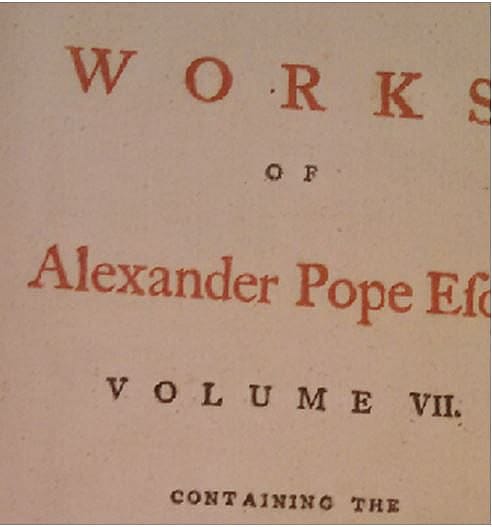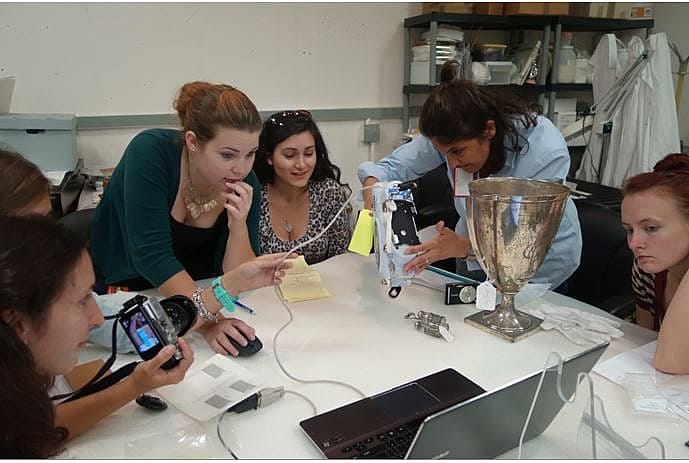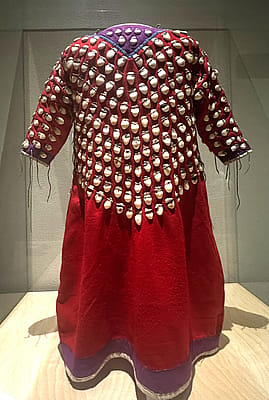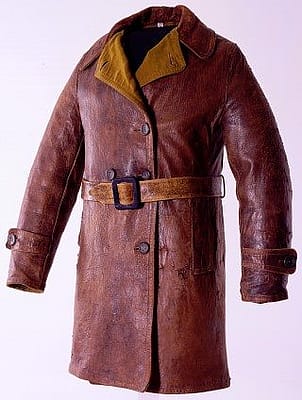
A Conservator’s Secret Weapon: The XRF Instrument
The Bruker XRF instrument
In early August, the conservation interns participated in an XRF (x-ray florescence) training session with Dr. Bruce Kaiser. Dr. Kaiser is the inventor of the Bruker® XRF instrument, used in countless conservation labs around the world.
The instrument is a valuable tool in the field of conservation, as well as others, because it allows a non-invasive elemental survey of material. This means that a sample of the object does not have to be removed in order to complete analysis using the Bruker XRF. In addition, unlike most other analytical instruments, the Bruker XRF instrument is portable. Therefore, rather than having to bring the object to the instrument, the Bruker XRF can be brought to the object, which equates to more access and less risk to the object at hand.
The interns not only learned how to use the instrument, but also learned about XRF theory and how to analyze and interpret the data to better understand the material that composes the object. During the training session, interns analyzed a variety of objects including books, swords, ceramic figurines, beads, spurs, and much more.
The XRF instrument works by emitting fluorescence, which ejects an electron of an atom in the lower energy shell. When the electron is ejected, an electron from a higher level shell falls down a level to take its place. The “secondary x-ray” energy that is omitted from this process identifies the element, as it is specific to each element.

Understanding the material and makeup of an object allows conservators to have the necessary information to make better treatment decisions. In the case of the interns’ metal projects, this was critical as solvents and treatment solutions react differently depending on the type of metal or alloy. It is not uncommon for the metal content to vary from the content expressed on the stamped hallmarks. XRF can define not only the content of the metal but, through the software “ARTAXControl,” also provides the ability to quantitatively analyze the data collected from the XRF instrument.

In addition, once the object’s composition is better understood, the information can reveal the causes for the condition of the object. For example, it was found that the red ink on the titlepage of a book that is currently being conserved contained mercury—a key ingredient in the red pigment vermillion. The mercury content helps explain the “strikethrough” that occurred on recto of the previous page. As Dr. Kaiser explained, the conservator can superficially analyze the material through compositional analysis and make an “educated guess” as to what the material may be. When elemental analysis (XRF) is paired with such molecular analysis, the content can not only be elementally identified but the actual material identified as well.

In sum, although the Bruker XRF is a new tool (developed about a decade ago), conservators all over the world are realizing the benefits of the instrument to treat their objects the Bruker XRF instrument can be compared to a flashlight, in that it is used to analyze our day-to-day projects, is practical, and reveals hidden information. We were all very pleased to have had the opportunity to learn the XRF technique and are certainly very excited to incorporate XRF analysis in our conservation projects this summer.
Written By
Anahit Campbell
Anahit Campbell is from Milwaukee, Wisconsin and is a graduate student in the Book Conservation program at West Dean College (UK). Her interests are manuscripts and conservation science. She is gaining experience at the Buffalo Bill Center of the West by working on the rare book collection.















